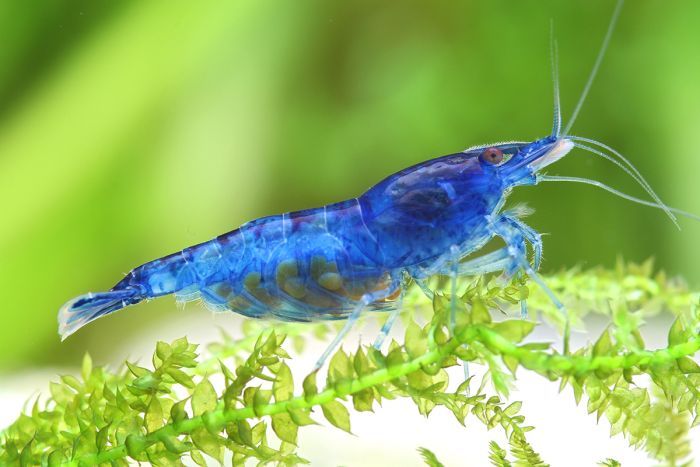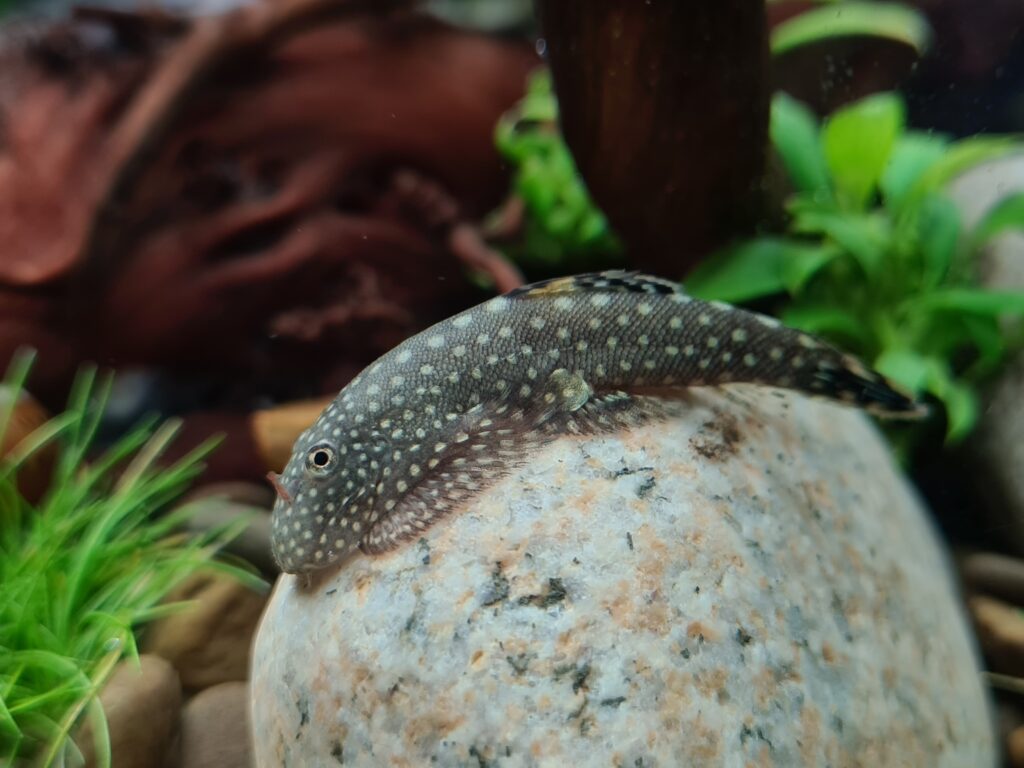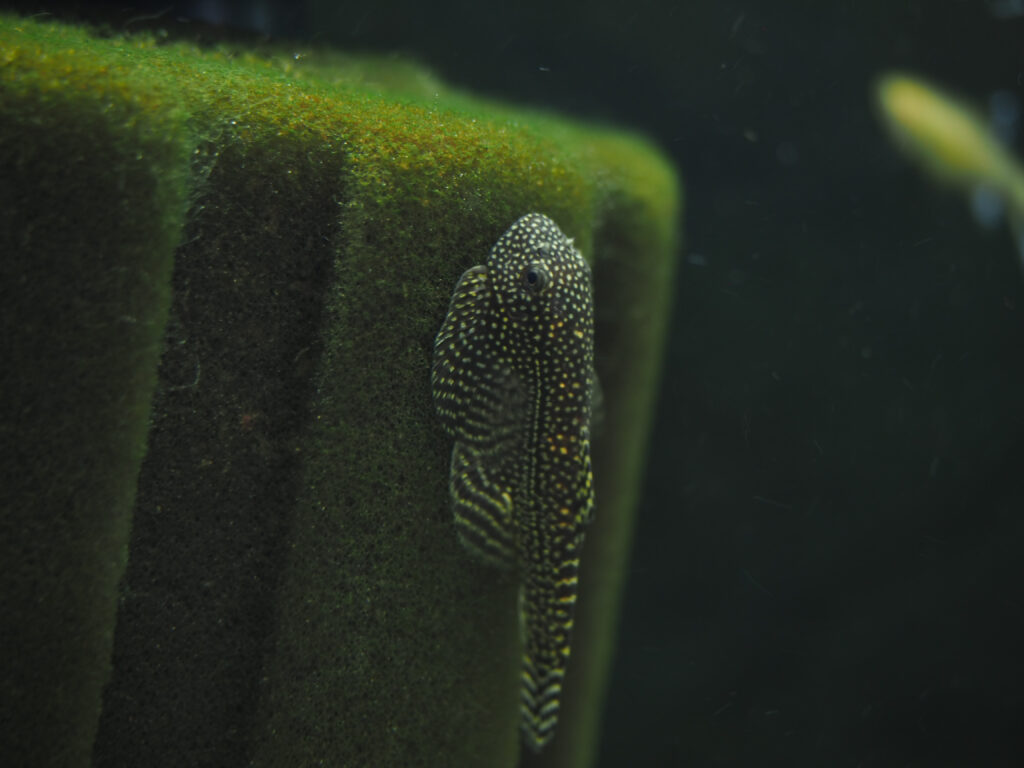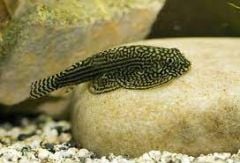Hillstream Loach Care Guide: Tank Mates, Size, Breeding & More
Table of Contents
Hillstream Loach: A Quick Overview on this Algae Eater
The Hillstream Loach is a small, non-aggressive fish native to clear, fast-flowing streams and rivers in Southeast Asia. This freshwater fish prefers well-oxygenated water with some current and rocky surfaces or other structures for hiding places and grazing on algae.
Hillstream loaches are excellent tank mates for many other species of tropical fish and make an attractive addition to any aquarium that suits them. Below, let's have a look at how to care for this
| Scientific name | Balitoridae |
| Common names | Hillstream loach, lizardfish |
| Difficulty level | Intermediate |
| Origin | Southeast Asia |
Hillstream Loach Natural Habitat
"Hillstream loach" is a collective name for various fish species (around 200 in total) in the family Balitoridae. The genus Sewellia is most popular in the aquarium trade, particularly Sewellia lineolata (the reticulated hillstream loach).
These odd-looking fish are found in streams and rivers with a fast current and plenty of rocks and other structures for shelter. An example would be the Xi Jiang River System in Southern China.
Hillstream Loach Appearance
Hillstream Loaches have elongated bodies, with a slim body shape, small eyes and long fins. They're perfectly adapted to life in extremely fast-flowing streams and rivers thanks to their flat and hydrodynamic shapes and fins that allow them to grip onto rocks or other surfaces.
These fish can reach up to 2-2.5 inches in length and come in various colors and patterns. The most common are black, white, yellowish-brown or olive with spotted markings along their dorsal fin.
Tank Requirements for Hillstream Loach
Hillstream Loaches prefer a tank setup with a good circulation of oxygen-rich water. A river biotope tank would be ideal! The pH should be between 6.5-7.8, with temperatures from 68 to 74 °F (20 to 24 °C).
The tank should be spacious enough for the Hillstream Loach to move around comfortably, ideally at least 20 gallons (76 liters), and heavily planted with smooth rocks, fine gravel, driftwood, and caves for the fish to hide in. A smaller aquarium is also an option, but you should take care not to overcrowd it.
It's best to use sand or very fine gravel substrate in the tank with loaches, as is true with pretty much all types of bottom-dwellers. Other types of substrate could have sharp edges, which may be abrasive to the fish as they swim along the bottom of the tank.
It's important to keep the water quality high in your freshwater aquarium, as Hillstream Loaches are a sensitive fish species that can quickly become stressed when exposed to sudden changes such as temperature spikes or poor water quality.
Ensure the aquarium is fully cycled before introducing your loaches, regularly check the water parameters and use a quality aquarium filter system with a high hourly turnover. Perform weekly water changes with temperature-matched water to keep the water quality in tip-top condition.
Current & Water Flow Requirements
Hillstream Loach require a fish tank with a decent current – this helps them to feed, as well as providing oxygenated water.
The water flow should be at least moderate in strength, as well as consistent. A good way to get the right amount of flow in your tank is to use a powerhead or small filter outlet in your fish tank.
Water Parameters
Hillstream Loaches are quite tolerant of different water parameters, though they thrive best in slightly acidic, hard water. The ideal pH range for a Hillstream Loach is 6.5-7.5, and the hardness should be between 10-20 GH (General Hardness). Temperature wise they prefer cooler temperatures around 68 to 74 °F (20 to 24 °C). They will also do well at room temp 65 and above in home basements.
As mentioned, regular aquarium maintenance is key in keeping parameters ideal and stable! Stable parameters are far more important then exact parameters.
Hillstream Loach Behavior
In the wild, the Hillstream loach is often found swimming in small shoals. They're known to be one of the more active loach species, spending most of their time grazing on the biofilm found on rocks and other surfaces.
Although these loaches are known for being a peaceful addition to the aquarium, it's important to keep in mind that males do form their own territories. You might see squabbles erupting on a regular basis, but rest assured: they don't actually appear to hurt each other.
Hillstream Loach Tank Mates
Hillstream Loaches are rather shy and docile creatures, so its important to choose their tank mates accordingly. They should not be kept with boisterous or aggressive fish as they can be easily intimidated and harassed. Also, avoid keeping them with large predatory fish that could possibly swallow a Hillstream Loach whole!
Keep in mind that these fish form groups in the wild. Your best bet is to get at least 3-4 to prevent stress.
And in case you were wondering, yes, you can keep dwarf shrimp with your Hillstream Loaches. Dwarf shrimp make an ideal tank mate for Hillstream Loaches, as they are peaceful and non-aggressive. Compared to other fish in the tank, they are small enough that they won't intimidate or harm the loaches. Amano Shrimp, Red Cherry Shrimp, or Blue Dream Shrimp would all work well.

Food & Diet
Hillstream Loaches are omnivorous and will eat a variety of foods. They should be fed a diet that consists mainly of live or frozen foods such as bloodworms, tubifex worms, glass worms, daphnia, white Mosquito larvae, other insect larvae and Brine Shrimp.
Additionally, the hillstream loach may accept some high quality dry foods like sinking pellets, fish flakes, algae wafers. Feed once daily and make sure not to overfeed as this can lead to health issues. They will feed on algae growth in the aquarium substrate/glass.
Breeding Hillstream Loaches
Male hillstream loaches grow to be larger than the females and will usually display a more colorful appearance. If you breed hillstream loaches, spawning typically occurs in groups over flat rocks or gravel patches, where the female deposits her eggs. The male will follow behind and fertilize them.
Once the spawning is complete, remove adult hillstream loaches into a separate tank, as they may consume the eggs or fry if they get the chance. The eggs should hatch within 2-4 days and the fry will be free swimming roughly 1 week later. At this point, they should be fed microworms or newly hatched brine shrimp.
Different types of Hill Stream Loaches
The most popular types of hillstream loach available in the aquarium trade is the reticulated hillstream loach (Sewellia lineolata). The genera Gastromyzon and Beaufortia are also regularly seen.
Frequently Asked Questions
Hillstream loaches are best kept in groups. Ideally, you should keep a group of at least 3 individuals to form a small colony. Keeping hillstream loaches together will also help them stay active and prevent loneliness. However, make sure the tank is big enough to hold the size of group you choose; as with any fish, overcrowding can lead to illness and stress.
Hillstream loaches prefer a sandy substrate which allows them to dig and hide, as well as providing a softer feel on their bellies. However, you should avoid using substrates that are too fine; this lead to clogging of their gills and potentially harm them. Additionally, you should also avoid sharp substrates, such as gravel or coral sand, which can scratch the loaches’ delicate skin. If you decide to use rocks in your tank for decoration, make sure they are smooth and not too large.
It is possible for hillstream loaches to eat small shrimp, but it is not likely. Hillstream loaches are more interested in scavenging the bottom of your tank for algae and other organic matter than they are in hunting down prey. If you do have a problem with larger hillstream loaches eating smaller shrimp, consider increasing the size of your shrimp or using a breed that is more agile and fast-moving. You can also add extra plants to the tank, which can provide cover for the smaller shrimp and make it harder for the loaches to target them.
Hillstream loaches enjoy the company of their own species and it is recommended that you keep them in groups of three or more. This will create a natural social hierarchy which can help to reduce stress levels in your tank. It also encourages natural behaviors like foraging, which helps reduce bioload from excess food particles in your tank. Providing
Hillstream loaches are relatively long-lived fish, with a lifespan of up to 10 years. Therefore, make sure you’re prepared and willing to take care of this entertaining fish for that length of time if you plan on keeping these fish in your tank. As with all aquarium fish, providing proper diet and water conditions is essential for ensuring their long life.



 Shrimp
Shrimp Fish
Fish Crab &
Crab & Plants
Plants Foods
Foods Snails
Snails

